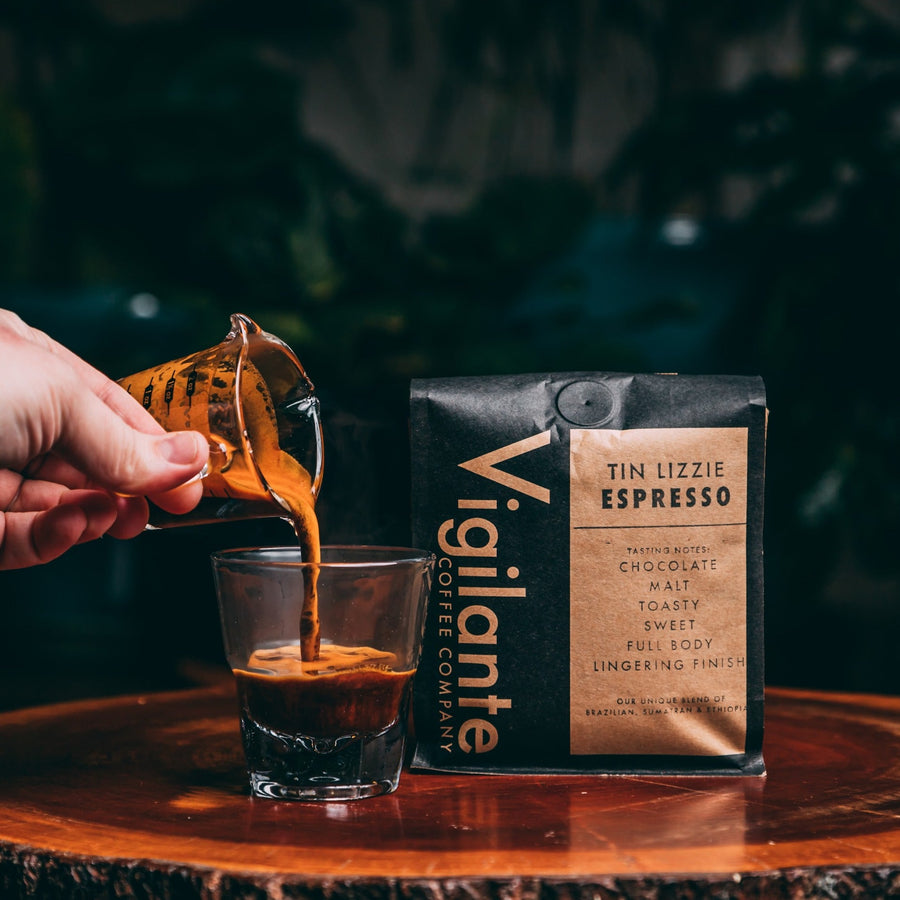What Makes SOE Single Origin Espresso Different from Blends
What Makes SOE Single Origin Espresso Different from Blends
Blog Article
Comprehending Coffee Beans: the Trip From Espresso to Blended Coffee Beans

The Origins of Coffee: A Worldwide Viewpoint
While you might think about coffee as a modern-day staple, its beginnings map back centuries, linking with societies around the world. The tale starts in Ethiopia, where tale states a goat herder named Kaldi uncovered the stimulating effects of coffee beans after noticing his goats frolicking energetically after eating them. This stimulated passion, leading to coffee's spread to Arab investors who valued the brewed drink. By the 15th century, it reached Persia, Egypt, and Turkey, where coffee shops ended up being social centers for conversation and culture.
As trade routes expanded, coffee made its means to Europe in the 17th century, rapidly gaining appeal. Each culture included its unique spin to coffee preparation, enhancing its history.
Farming and Harvesting of Coffee Beans
As coffee's trip developed, the emphasis shifted to the cultivation and harvesting of specific bean ranges, specifically those made use of for espresso. You'll locate that coffee beans frequently originate from Arabica or Robusta plants, each offering distinctive flavors. The perfect growing problems consist of high elevations and rich, well-drained soil, which boost the beans' high quality.
Throughout the harvest, choosing methods vary. Timing is crucial; you want to gather when the cherries reach peak ripeness for maximum taste.
Once collected, the beans are prepared for processing, which is crucial in establishing their final preference. Recognizing the cultivation and collecting procedures provides you understanding into what enters into your preferred espresso, improving your gratitude for each cup.
Processing Methods: From Cherry to Bean
Since you have actually found out about collecting espresso beans, let's explore just how those cherries transform into the coffee beans you enjoy. You'll see exactly how various harvesting techniques effect taste, adhered to by the necessary steps of fermentation and drying. We'll damage down the milling and grading procedure that establishes your coffee's top quality.
Harvesting Techniques Explained
When it comes to coffee, comprehending harvesting techniques is important, considering that they directly affect the taste and high quality of the beans you appreciate. Discerning selecting entails hand-picking only ripe cherries, guaranteeing you get the ideal high quality beans. Inevitably, the selection of harvesting technique can significantly influence your coffee experience, so it's worth knowing how those beans made it to your mug.
Fermentation and Drying
After collecting, the next actions in processing coffee beans play a considerable duty fit their taste. You'll find that fermentation is important, as it aids break down the mucilage surrounding the beans, boosting their taste profile. Depending upon the approach, this procedure can last from a couple of hours to numerous days, with varying outcomes based upon temperature and humidity.
Sun-drying enables the beans to absorb flavors from the setting, while mechanical drying out assurances constant dampness degrees no matter of weather. Correct drying is essential to prevent mold and protect the beans' top quality, inevitably influencing your cup of coffee.
Milling and Grading Process
As fermentation and drying established the phase for flavor growth, the milling and grading process assurances that just the most effective coffee beans make it to your cup. This stage entails eliminating the outer layers of the coffee cherry, consisting of the parchment and husk. After milling, the beans are arranged by dimension and weight, ensuring a consistent quality. You'll discover that grading aids identify flaws and classify beans, which affects taste and aroma. High-grade beans receive a greater quality, resulting in a richer coffee experience. Once graded, the beans await packaging and delivery, preserving their unique features. This thorough procedure is crucial for providing the phenomenal preference you enjoy in every sip of your favored mixture.
Toasting Methods: Unlocking Flavor Possible
When you roast coffee beans, the approach you select can considerably affect the taste profile. Recognizing the partnership in between time, temperature, and toasting strategies is essential to disclosing the potential of your brew. Allow's explore just how these aspects integrated to develop the best cup.
Toasting Techniques Clarified
While you may assume that all coffee roasting methods produce the exact same outcomes, the reality is that each technique reveals special taste potentials in the beans. You can select between methods like drum toasting, air roasting, and even traditional pan roasting. Drum toasting uses a revolving drum to uniformly disperse warm, improving caramelization and producing a well balanced flavor. Air roasting, on the various other hand, flows hot air around the beans, advertising a lighter roast with obvious level of acidity. Pan roasting allows for hands-on control yet needs constant interest to avoid burning. Each approach has its nuances, so trying out different methods can aid you discover the perfect roast that aligns Discover More Here with your preference choices. Appreciate the journey of discovering your ideal cup!

Influence On Flavor Profile
Various roasting techniques not only influence the procedure yet additionally greatly influence the flavor profile of the coffee beans. Dark roasts, on the other hand, bring out bold, great smoky tastes, sometimes masking the bean's special features. Comprehending these nuances aids you value the artistry behind your cup of coffee, enhancing your total experience with every sip.
Time and Temperature Level Elements
To release the full taste potential of coffee beans, both time and temperature during the roasting procedure play significant duties. When toasting, you'll discover that greater temperatures can promptly develop flavors, however if you rush it, you could wind up with burned notes. Alternatively, reduced temperature levels permit a much more steady flavor advancement, showcasing the beans' one-of-a-kind attributes.

Timing is equally as important; extending the roast also long can lead to a loss of level of acidity and illumination, while as well brief a roast could leave the beans underdeveloped. Finding that wonderful place needs technique and trial and error. By changing these aspects, you can reveal the abundant, complex tastes concealed within each bean, creating an absolutely remarkable coffee experience.
The Art of Blending: Crafting Distinct Coffee Accounts

Beginning by choosing a base coffee that supplies a solid structure. Pick corresponding beans to improve certain taste notes. For example, an intense Ethiopian bean can bring fruitiness, while an abundant Brazilian coffee adds body. Experimentation is key-- do not hesitate to change ratios till you locate your suitable profile.
As you blend, maintain in mind that each combination informs a story. You're not just making coffee; you're producing an experience. So, take your time, preference often, and delight in the journey of finding your signature blend.
Developing Techniques: How Prep Work Affects Flavor
Mixing coffee opens up a domain of taste possibilities, but exactly how you make that blend can substantially influence your last mug. On the other hand, a pour-over highlights the coffee's clearness and illumination, excellent for showcasing delicate notes.
Coffee, with its high pressure, creates a concentrated shot that emphasizes sweetness and crema. If you choose a lighter brew, take into consideration a cool brew technique; it generates a smooth, less acidic taste.
Changing variables like water temperature level, grind size, and make time can transform your coffee's account. Embrace the art of brewing to find the flavors hidden in your coffee blends.
The Future of Coffee: Sustainability and Development
As the coffee market evolves, sustainability and advancement are ending up being vital for attending to ecological challenges and conference consumer demands. You'll notice that more coffee firms are embracing eco-friendly practices, from sourcing beans fairly to executing sustainable farming strategies. These changes not just aid the earth yet also enhance the high quality of the coffee you delight in.
You could see technologies like naturally degradable product packaging and water-saving brewing approaches that minimize waste. Advanced modern technology, such as blockchain, is likewise coming to be preferred, making certain transparency in the supply chain, which enables you to map your coffee back to its origins.
Additionally, investing in local communities and supporting farmers via fair profession campaigns fosters a more lasting coffee ecological community. As you drink your next mug, bear in mind that your options can add to a brighter future for coffee. By choosing lasting brands, you're not simply delighting in a drink; you're making a favorable influence on the globe.
Regularly Asked Concerns
What Is the Distinction Between Arabica and Robusta Beans?
Arabica beans are smoother, sweeter, and have a greater level of acidity, while robusta beans are more powerful, extra find more info bitter, and consist of even more caffeine. You'll notice these distinctions in taste and aroma when brewing your coffee.
Exactly How Does Altitude Affect Coffee Bean Taste?
Elevation effects coffee bean taste considerably. Higher altitudes produce beans with brighter level of acidity and complicated flavors, while lower altitudes typically generate beans that are heavier and less nuanced. You'll discover these distinctions in your cup!
What Are the Wellness Advantages of Alcohol Consumption Coffee?
Consuming alcohol coffee Continued can increase your power, boost psychological focus, and also enhance physical performance. It's abundant in antioxidants, may reduce the risk of specific illness, and can promote a healthier metabolism when eaten in moderation.
Can Coffee Beans Be Reused for Brewing?
Yes, you can reuse coffee beans for brewing, but the taste may be weaker. If you enjoy trying out, attempt recycling them in various ways, like cool brews or including in shakes for an added kick.
Exactly how Should I Store Coffee Beans for Freshness?
To maintain your coffee beans fresh, keep them in an impermeable container in an awesome, dark area. Avoid subjecting them to wetness, light, or warmth, as these elements can rapidly weaken their flavor and aroma.
Comprehending Coffee Beans: the Trip From Coffee to Blended Coffee Beans.
Currently that you've found out regarding harvesting coffee beans, allow's explore just how those cherries transform into the coffee beans you enjoy.When you roast coffee beans, the approach you pick can significantly impact the taste account - Single Origin Espresso.While you might assume that all coffee roasting approaches yield the very same results, the truth is that each technique exposes distinct flavor possibilities in the beans.Various roasting techniques not only affect the process however also considerably impact the flavor profile of the coffee beans
Report this page